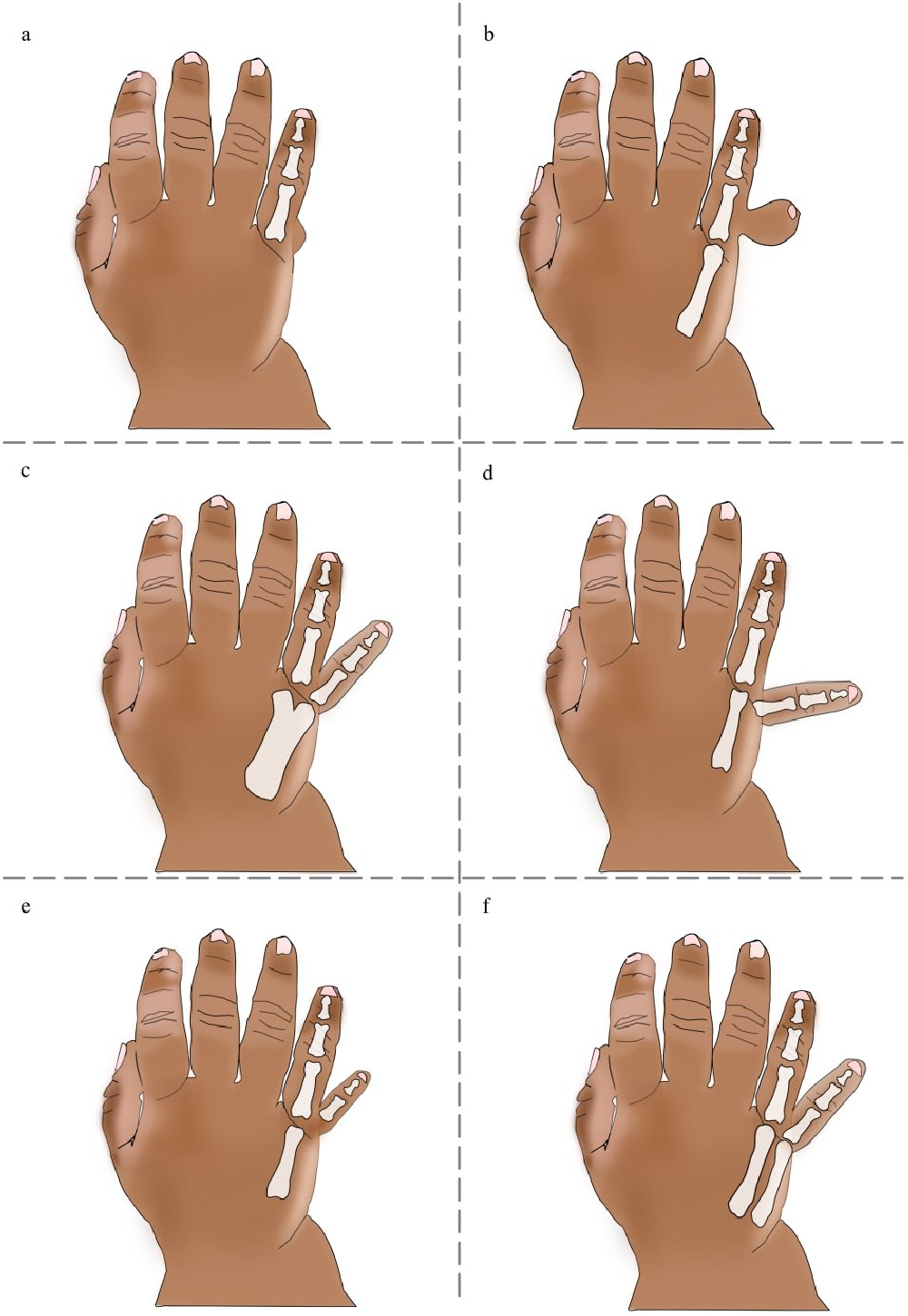I have been reading about polydactyly and found that surgery is only necessary in certain cases. It depends on way the extra digit on the hand or foot is attached.
For example, central polydactyly (a very rare situation, in which the extra digit is on the ring, middle or index finger) requires early osteotomy and ligament reconstructions to prevent deformities, such as angular growth deformities.
What I am wondering about is the most common type which is ulnar polydactyly also called postaxial polydactyly (the extra digit is on the ulnar side of the hand, thus the side of the little finger).
Neuroscience and psychology have studied the consequences for humans of losing a limb or other body parts, including documenting the pain caused by the phantom limb effect (usually explained as due to reorganisation of the brain’s representation of missing part).
What has neuroscience been able to establish regarding the extra sensorimotor information the brain would be dealing with? Can those with extra fingers use their extra digits with no problems with coordination etc?


